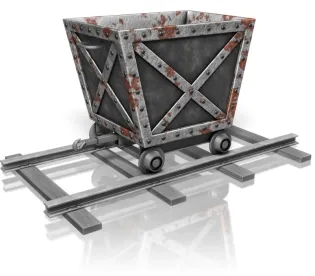The National Mining Association (NMA) wants MSHA to stay the effective date of its final rule to control miners’ exposure to respirable coaldust pending the outcome of litigation over the rule. However, MSHA quickly denied the NMA request.
Suit was filed against the agency in the U.S. Court of Appeals for the Eleventh Circuit on behalf of NMA, Alabama Coal Association, Walter Energy and Warrior Coal Co. Previously, Murray Energy Corp. and its subsidiaries filed a petition for review in the U.S. Court of Appeals for the Sixth Circuit which has now been transferred to the 11th Circuit. .
NMA’s Bruce Watzman wrote MSHA Assistant Secretary Joe Main seeking the stay, stating that “various pieces of the rule simply do not fit together.”
“[T]he implementation schedule and the new requirements are misaligned and, as a result, preclude a fair and proper opportunity for coal mine operators to comply with the rule. In many cases, compliance will be infeasible,” said Watzman, NMA’s Senior Vice President for Regulatory Affairs. The regulation is set to go into effect in stages over the next two years.
Watzman pointed to the requirement, effective August 1, whereby operators must take "immediate corrective actions" based on existing sampling technologies, which cannot provide results instantaneously. A device that can provide near instantaneous measurements, the CPDM, is not mandated for use until February 2016. Therefore, the requirement is impossible to achieve.
He also called attention to the requirement to use a single dust sample to determine compliance, a change that can only be made through joint MSHA/NIOSH rulemaking, which did not occur.
There is a “high risk of inaccurate results,” he told Main, adding that the approach makes meeting the reduced dust concentrationstandardintheruleinfeasible. Surprisingly, his concern was echoed by Cecil Roberts, head of the United Mine Workers of America (UMWA).
While offering his union’s “qualified support” for the rule in a statement released May 12, Roberts said, “We wonder ourselves how things like the single-shift sample that will be done by MSHA to enforce compliance will work, and if there will be undue adverse consequences from it.”
Watzman also predicted MSHA’s application of its new definition of “normal production shift” will cause operating problems. Further, he questioned whether technical problems associated with the CPDM would be worked out by 2016 or even if a sufficient supply of the new devices would be available then.
In the first coalfields stakeholder meeting on the rule held by MSHA on May 8 in West Virginia, an operator also noted the high cost of the new monitor. He said his company would have to spend $750,000 for 40 to 50 units and asked if financial assistance would be available. He was told no assistance is built into the rule and that his per-unit estimate was $3,000-$5,000 too low.
UMWA’s Roberts seem to share Watzman’s general concern over how the rule is to be implemented feasibly. Roberts said, “We hope that, as the stakeholders move forward in understanding and implementing this rule, we can get more clarity from MSHA as to how it will actually be applied and enforced in an active working coal mine environment.”





 />i
/>i

